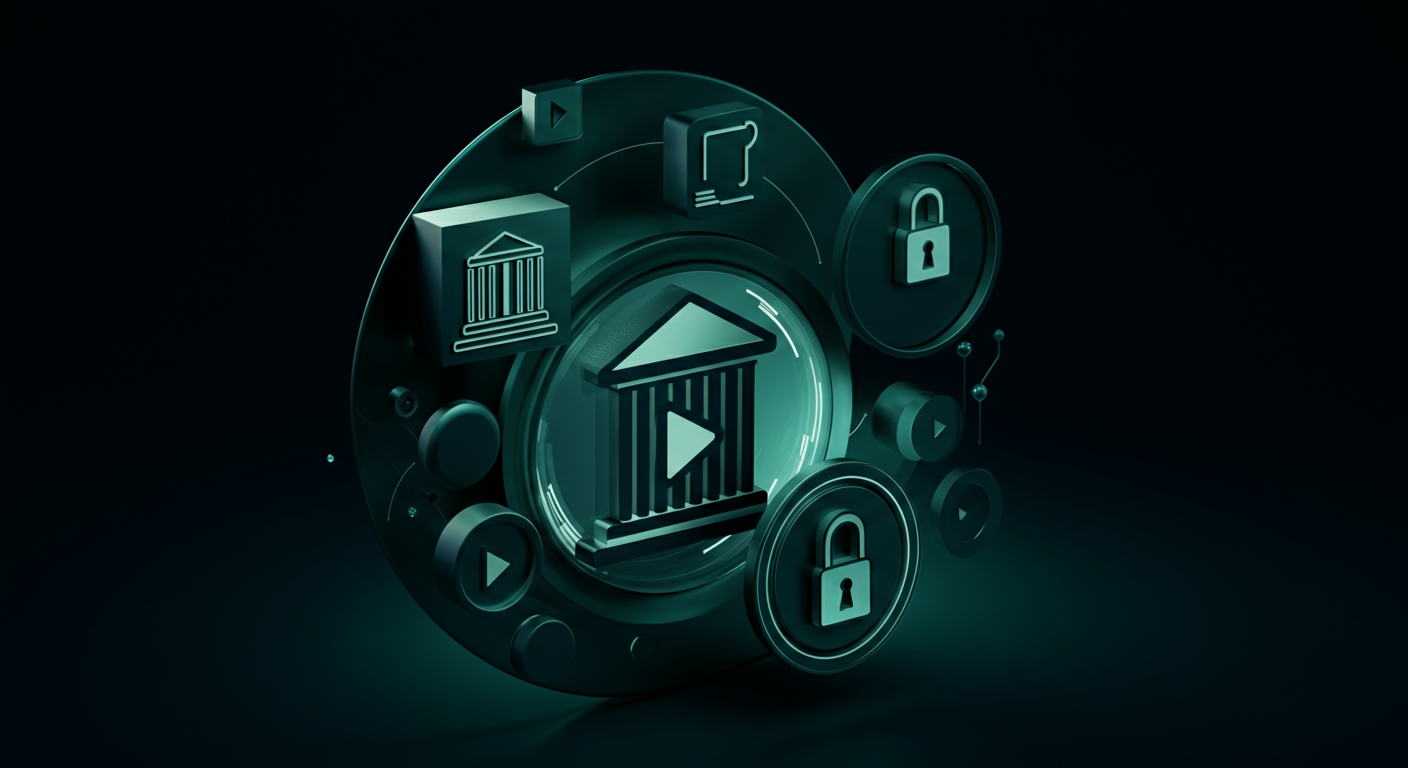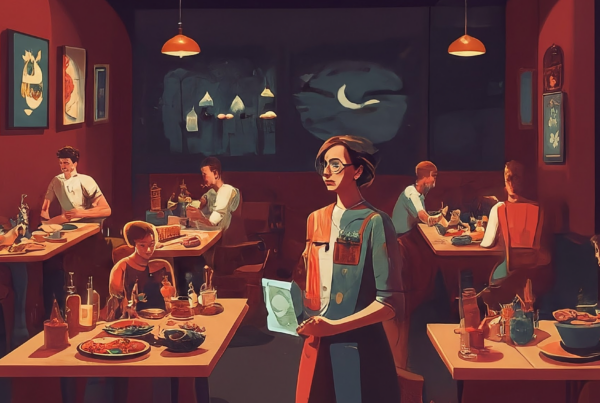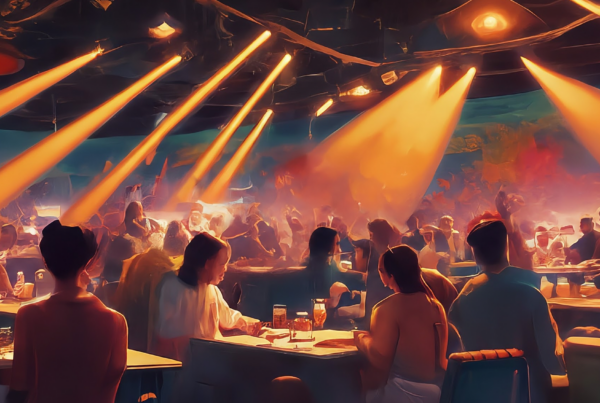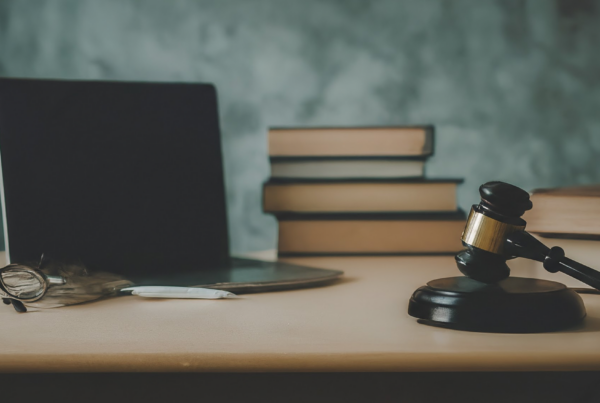In today’s fast-paced digital world, understanding the legal aspects of video programming is more crucial than ever for businesses in the hospitality and entertainment sectors. Whether you run a bustling casino, a trendy restaurant, or a vibrant bar, the content you display can significantly impact your customer experience. But with this power comes the responsibility to navigate a complex legal landscape that governs the distribution and licensing of commercial video programming.
For businesses seeking to enhance their customer engagement and create a lively atmosphere, it’s essential to grasp these legal nuances. Not only can this knowledge help you avoid costly pitfalls, but it also ensures compliance with regulations that protect your business and your audience. At DLM Media, we understand the importance of a worry-free experience, and we are committed to providing high-quality content solutions that align with your legal responsibilities.
In this blog post, we will delve into the key legal considerations you need to be aware of when selecting and using commercial video programming. From licensing agreements to accessibility requirements, we’ll cover the essential points that will help you make informed decisions. Our goal is to empower you with the knowledge you need to create an engaging environment for your customers while staying on the right side of the law.
So, whether you’re a multi-location organization looking for a centralized entertainment solution or a business eager to enhance its customer experience, this guide is your starting point. Let’s explore the intricacies of the legal landscape and discover how DLM Media can support your journey toward a seamless and compliant video programming experience.
Understanding Copyright Laws in Video Programming
In the realm of commercial video programming, copyright laws play a pivotal role in safeguarding intellectual property. These laws ensure that creators and distributors of video content are protected from unauthorized use, which is crucial for maintaining the integrity and value of their work. For businesses in the hospitality and entertainment sectors, understanding these laws is essential to avoid potential legal pitfalls.
Copyright laws are designed to grant exclusive rights to the creators of original works, including video programming. These rights allow creators to control how their content is used, distributed, and monetized. For businesses, this means that obtaining proper licenses is not just a legal obligation but also a strategic necessity to ensure smooth operations and avoid costly infringements.
The Importance of Licensing in Video Programming
Licensing is a critical component of copyright compliance in video programming. It involves obtaining permission from the copyright holder to use their content. This process not only legitimizes the use of the content but also supports the creators financially. Businesses that fail to secure the appropriate licenses risk facing legal actions, which can result in hefty fines and damage to their reputation.
For instance, a well-documented case involved a popular restaurant chain that was fined significantly for playing copyrighted music videos without the necessary licenses. This case underscores the importance of understanding and adhering to licensing requirements to avoid similar repercussions.
Implications of Copyright Infringement
Copyright infringement occurs when someone uses copyrighted material without authorization. In the context of video programming, this can include unauthorized broadcasting, copying, or distribution of video content. The consequences of infringement can be severe, ranging from legal penalties to the loss of business credibility.
The Federal Communications Commission (FCC) and U.S. Code regulations provide guidelines to help businesses navigate these legal waters. These regulations emphasize the need for compliance to protect both the creators’ rights and the businesses’ interests. Ignorance of these laws is not a defense, making it imperative for businesses to stay informed and compliant.
Case Studies: Learning from Real-World Examples
Examining real-world cases of copyright infringement can offer valuable insights into the importance of compliance. One notable example is the case of a bar that faced legal action for streaming live sports events without proper licensing. The court ruled in favor of the copyright holders, resulting in substantial financial penalties for the bar owner.
Such cases highlight the necessity for businesses to conduct thorough due diligence and secure all necessary licenses before using copyrighted material. By doing so, they not only protect themselves from legal troubles but also contribute to a fair and sustainable ecosystem for content creators.
For more detailed guidance on navigating the legal landscape of video programming, explore additional resources on DLM Media’s website. Our team is dedicated to helping businesses achieve compliance while delivering exceptional entertainment experiences.
Navigating Licensing and Distribution Rights
Understanding the complexities of licensing and distribution rights is crucial for businesses in the hospitality and entertainment industries. These rights dictate how video programming can be used, shared, and monetized, impacting everything from the content you display to the customer experience you provide. As businesses strive to enhance their environments with engaging video content, navigating these legal aspects becomes essential to avoid potential pitfalls and ensure compliance.
Licensing involves obtaining permission from content creators or rights holders to use their material, while distribution rights determine how and where the content can be shared. For businesses like casinos, restaurants, and bars, acquiring the correct licenses is not just a legal requirement but a strategic move to ensure uninterrupted operations and customer satisfaction. Let’s delve into the different types of licenses and their applications in commercial settings.
Types of Licenses in Video Programming
Licenses in video programming can vary significantly depending on the content type and intended use. Here are some common types:
- Public Performance License: Required for displaying video content in public settings, such as bars or restaurants. This license ensures that the content is legally shown to patrons.
- Synchronization License: Needed when video content is combined with other media, like music, to create a new product. This is often used in promotional videos or advertisements.
- Reproduction License: Allows businesses to make copies of video content for distribution or archival purposes. This is crucial for businesses that need to store content for future use.
Each license serves a specific purpose and is essential for different business needs. Understanding which license applies to your situation is the first step in ensuring compliance and avoiding legal issues.
Acquiring Licensing and Distribution Rights
Securing the appropriate licenses and distribution rights involves several steps. Here’s a simplified approach to guide businesses:
- Identify the Content: Determine the type of content you wish to use and its intended purpose.
- Research Licensing Requirements: Investigate the specific licenses needed for your content type and usage. This may involve consulting with legal experts or industry associations.
- Contact Rights Holders: Reach out to the content creators or rights holders to negotiate terms and obtain the necessary licenses.
- Draft Agreements: Work with legal professionals to draft agreements that clearly outline the terms of use, distribution rights, and any associated fees.
- Maintain Compliance: Regularly review your licenses and agreements to ensure ongoing compliance with legal requirements and industry standards.
By following these steps, businesses can navigate the complex landscape of licensing and distribution rights effectively, ensuring that their video programming efforts are both legally compliant and strategically sound.
Comparing Different Types of Licenses
To better understand the differences between various licenses, consider the following table:
| License Type | Purpose | Common Uses | Key Considerations |
|---|---|---|---|
| Public Performance License | Allows public display of video content | Bars, restaurants, casinos | Ensure coverage for all content types |
| Synchronization License | Combines video with other media | Advertisements, promotional videos | Negotiate terms for media use |
| Reproduction License | Allows copying of video content | Archival, distribution | Check for restrictions on copies |
Understanding these distinctions helps businesses make informed decisions about their video programming strategies. For more detailed guidance on licensing and distribution rights, explore resources on DLM Media’s website.
Regulatory Compliance in Video Programming
In the realm of commercial video programming, regulatory compliance is a critical aspect that businesses must navigate to ensure they meet legal standards and avoid potential penalties. The legal aspects of video programming encompass several regulations, with accessibility and closed captioning mandates being among the most significant. These regulations are primarily governed by the Federal Communications Commission (FCC) and relevant U.S. laws, which set the framework for compliance.
Accessibility is a key focus in video programming, as it ensures that content is available to all individuals, including those with disabilities. The FCC has established guidelines that require video programming to be accessible through closed captioning, providing a visual display of the audio portion of the content. This is particularly important for individuals who are deaf or hard of hearing, allowing them to engage with video programming effectively.
Understanding FCC Guidelines and U.S. Laws
The FCC’s guidelines mandate that all video programming shown on television must include closed captions when distributed online. This requirement extends to full-length video programming and video clips, ensuring that accessibility is maintained across platforms. The Twenty-First Century Communications and Video Accessibility Act of 2010 further emphasizes the need for closed captioning, outlining specific deadlines and criteria for compliance.
Businesses in the hospitality and entertainment sectors, such as casinos, restaurants, and bars, must adhere to these regulations to avoid legal repercussions. Failure to comply can result in fines and damage to a business’s reputation. Therefore, understanding and implementing these guidelines is essential for maintaining compliance and providing an inclusive experience for all customers.
Common Compliance Questions
- What are the key accessibility requirements for video programming? Businesses must ensure that all video content includes closed captions, as mandated by the FCC and U.S. laws. This applies to both television broadcasts and online distributions.
- How can businesses ensure compliance with closed captioning mandates? Regularly review FCC guidelines and consult with legal experts to stay updated on compliance requirements. Implement closed captioning for all video content and ensure that it meets the standards set by the FCC.
- What are the penalties for non-compliance? Businesses that fail to comply with accessibility regulations may face fines and legal actions. Additionally, non-compliance can harm a business’s reputation and customer trust.
By addressing these common questions, businesses can better understand the importance of regulatory compliance in video programming. Ensuring accessibility not only fulfills legal obligations but also enhances the customer experience, making video content available to a wider audience.
For more information on navigating the legal landscape of video programming, explore resources on DLM Media’s website. Our team is dedicated to helping businesses achieve compliance while delivering exceptional entertainment experiences.
Key Takeaways for Legal Compliance in Video Programming
As we wrap up our exploration of the legal aspects of video programming, it’s clear that understanding and adhering to these regulations is paramount for businesses in the hospitality and entertainment industries. Navigating this complex legal landscape not only helps avoid costly legal pitfalls but also ensures that you deliver a rich and engaging customer experience. By taking proactive steps to secure the right licenses and comply with accessibility mandates, businesses can protect their interests while supporting the rights of content creators.
To summarize the critical points discussed:
- **Understand Copyright Laws**: Copyright laws protect intellectual property and mandate that businesses obtain proper licenses for any video content they display.
- **Secure Necessary Licenses**: Different licenses, such as public performance and synchronization licenses, are required based on how you use video content. Ensure you have the appropriate permissions to avoid legal issues.
- **Comply with Accessibility Regulations**: The FCC requires closed captions on all video programming, making it essential to follow these guidelines to cater to all audiences, including those with disabilities.
- **Regularly Review Legal Requirements**: Stay informed about changes in regulations and ensure ongoing compliance by consulting with legal experts when necessary.
As you strategize your video programming efforts, consider how these legal aspects impact your business model. It’s not just about compliance; it’s about creating a safe and inclusive environment for your customers. At DLM Media, we are here to support your journey with reliable solutions tailored to your legal and entertainment needs.
We encourage you to take action today. Review your current legal compliance strategies and make necessary adjustments to align with industry standards. Explore more resources and insights on our website to stay ahead in the dynamic world of commercial video programming. Share your thoughts or questions in the comments below, and let’s continue the conversation on creating compliant and captivating entertainment experiences.





